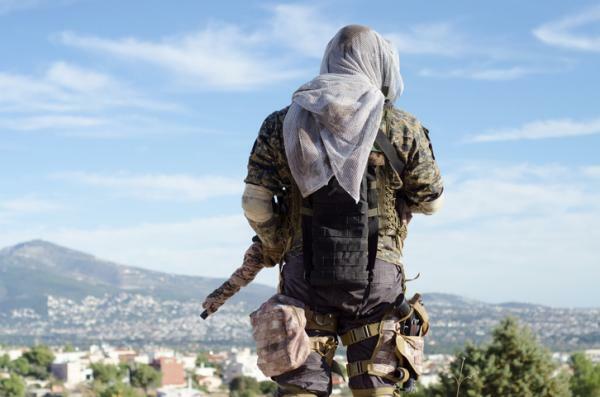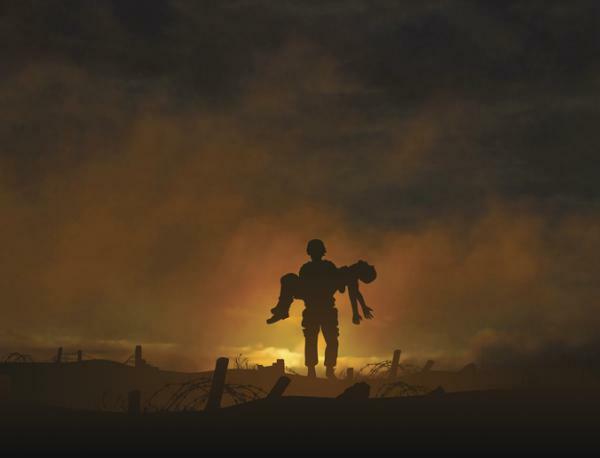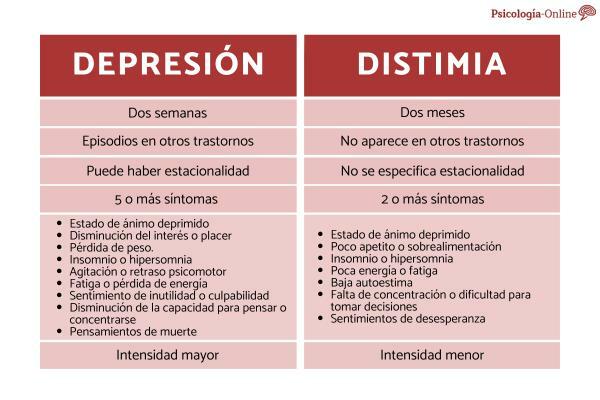For Federico Vacaflor Barquet. March 16, 2018

Violence, be it natural or human, has permanently presided over the life of the planet. Never, in our entire existence as a species, have we been able to bypass or dominate it. Even more: we are her children and as good children we practice it and use it when we believe it is necessary. From PsicologíaOnline, we believe it is necessary to develop an article on Social Violence in History.
However, recognizing filiality does not imply accepting it meekly and without any qualms. Especially when it can induce the suicide of the species, as a threat to occur in our time.
However, and despite this stark reality, man always thought of peace and created culture to confront the violent forces of nature as well as his own violence. He worked and works hard for get tranquility and rest that allows you to fully enjoy life. In the reality in which he moves, however, he is forced to dialogue with forces and violent powers that tense his will and decision, forcing him to respond with extreme violence to the challenges presented by the lifetime. Despite this, he always wanted a peaceful world.
To such an extreme was this obsession that in the most violent and hostile periods of his history that he lived, he did not hesitate to imagine earthly paradises where violence did not exist. Areas where the forces of nature do not terrify with their power and spectacularity; men and peoples who did not attack each other with incredible ferocity; individual illnesses and tragedies that baffled him and plunged him into infinite pain. Hence his need to escape to such a terrible and ineluctable reality, creating fabulous realms of peace and bliss, or believing in the existence of beautiful, peaceful and happy past times without blemish of pain. And so he imagined the Golden Age, which he never managed - until today - to embody it in a tangible reality.
More him stubborn animal man, tough and untamed - survived over his hostile circumstances; even more: he expanded with incontestable force throughout the habitable land, well he had the right elements to unfolding him and displaying a unique genetic plasticity quickly occupied all geographic ranges surprising.
On his way, the violence of the various media surely attacked him viciously and although not a few individuals fell, his march did not stop until he covered the virgin planet.
In this primeval epic made by the human species, there is the palpable demonstration that he knew impose himself on objective violence, on the violence of the world that surrounded him and that often blinded his lifetime. But, the man himself - as the son of natural violence - warned very early that he contained in his his own body an incoercible force that made him violent and enabled him to become destructive and deleterious.
The lucid awareness that man always had about his close affiliation with violence, made him observe her with strangeness sometimes, fear other times and even an inexplicable curiosity and interest in the force that nested in his nature and in the world.
In fact, he never stopped observing her, even when he did not find a satisfactory answer; to conjure it he invented countless divinities, representing it in the most different and capricious ways. All religions bear witness to it; all human beliefs and visions clothed her with the most capricious faces, although always related to the experiences of each group, both in relation to their observations on the surrounding environment and their own life inside. The task of describing the visions that violence aroused in men's feelings would be endless.
For this reason, since the dawn of civilized life, men have not only been content to describe it in myriads of monuments both literary and architectural and statuary, but to subject it to an increasingly study and observation deep. Human experience, when he was in a position to carry out this inquiry, she was already full of knowledge; moreover, it is extremely difficult for him to encompass it in all its reality and dimension and much more to seek some solution to dominate it absolutely.
Nonetheless, human beings are not so helpless and helpless in the face of a phenomenon that is there, in and in front of their lives. There are a lot of facts, in which all the interpretations and individual inquiries and social, agree on the possibility of subjecting them to an objective study, reducible to a deep analysis and truthful; facts with identifiable characteristics and with their overt manifestations.
This does not mean, however, that such inquiries, no matter how "objective" we try to recognize them, do not keep a good dose of natural and -we could say- inevitable subjectivity; but, even in their committed perspective, they will not cease -in all cases-to be a contribution to the elucidation of the nature of a natural phenomenon that worries - and greatly - the human race.
Consequently, the study of violence in our days becomes ineffective; less natural that worries - and a lot - to the human race.
Consequently, the study of violence in our days becomes essential, so the adoption of an adequate methodology is necessarily imposed:
- When approaching its study, it is first necessary to direct the examination towards the very concept of "violence" and the scope of action in which it is exercised. Determine, as precisely as possible, what violence we are referring to - "objective" (extrahuman) violence or human violence or if we wish to inquire about the ultimate foundations of violence as a reality metaphysics. Whatever our approach, we cannot escape the relative condition of our contribution, although it is no less valuable than those other supposedly totalizing intellectual constructions.
- The analysis of the concept "violence" must be rigorous, endowed with the largest number of variables that could eventually converge to elucidate its meaning. In this sense, -as stated by Michaud (1989: 20/22). - We must warn that "the variations, fluctuations and finally, the indefinability of violence positively constitute its reality."
- This variability of the violent act within the social world, Although they may incorporate elements that cloud and disorient the analysis, they should not at any time impede the determination of the basic coordinates of time and place within which any situation of violence.
- Framed by these temporal-spatial determinations, the inquiry must be rigorous both in depth and in extent. An act of violence is basically a social fact that not only has a present, but also a past, an antecedent, a history... Knowing this "phylum", enriched with the greatest number of incorporated facets, constitutes an invaluable knowledge for the correct appreciation of the violent act itself. The same happens with its extension. The area of influence of its effects will allow the researcher to thread the subtle social links that the fact Violent has established, not only with other facts but also with other aspects - perhaps non-violent - of life Social.
- Consequently, when investigating the social violence of a specific historical period or chosen territorial area, the analysis must be comprehensive, preferably covering objective social aspects (e.g. economic, political, social, etc.) such as also the individual motivations that participated in the configuration of the act of violence of reference. In the case of the latter, specify with the greatest accuracy the interests at stake that energize them, as well as the cultural conceptions (ideologies, etc.) that drive them.
- It is not uncommon in some analyzes, especially of a retrospective nature, to note that acts of violence were studied restrictively, that is, without taking into account the context or their historical background. This procedure, however, must be modified, replacing it with an inquiry into them. This procedure, however, must be modified, replacing it with an inquiry as wide and varied as possible. possible, specifying the sources and social circumstances as completely as can be possible. Not only contemporary witnesses should be required to hear their versions, but also all the auxiliary disciplines of historical analysis.

The speeches on violence they always occur in each culture and in different historical times, deployed from dissimilar and varied perspectives such as class, sociocentric, individualistic criteria, etc. or other referential frameworks of intro, inter or extra-social confrontation.
All the cultures of the world, by explicitness or omission, usually elaborate discourses on social violence, especially if those cultures genuinely reflect their external and internal realities in the realm in which they are manifest.
Discourses on social or individual violence can recognize any aspect of manifestation, be they written or transmitted orally. Societies will be heard orally. Poor societies also record in their cultures, discourses related to violence both at the individual level and at the social level. All the more so if we refer to written cultural traditions. In this sense, it is well worth mentioning the criteria concepts of G. Guthman (1991: 20-21):
"Discourses of violence in a broad sense, are all religious texts, such as the Bible, the Koran, the Iliad, the Popohl Vuh, etc. and many other literary monuments. It is not necessary that such speeches do not directly incite violence: it is enough that it divides human beings between the reprobate and the elect or puts into practice criteria for their discrimination. both in ancient and contemporary times these discourses almost constitute the majority of those consumed in our societies. The Social Sciences, for example, register thousands of speeches that establish discriminatory and exclusive guidelines. "
However, when faced with phenomena that we assume to be violent, we cannot avoid a certain uneasiness aroused by the concept polysemy which makes us very different from the concept that makes it very difficult for us to constrain such a variety of phenomena into a definition.
Of course this is a taking an absolutist position; If, on the contrary, we approach the concept and the observed realities with a relativistic criterion, we could well affirm that there are no phenomena of violence but events to which "violence" is attributed, and that the assignment of such criteria are not always formulated or conceived clearly.
This is due, as is easy to see, to the various types of violence and the different scenarios where it can manifest itself, be it nature, social groups or individual settings. Add still the coordinates of space and time that give the dynamism and density necessary to achieve the configuration of a unique social reality.
The difficulty of assignment, then, it is evident and in some way, quite random, what brings us closer to the field of value judgments.
This article is merely informative, in Psychology-Online we do not have the power to make a diagnosis or recommend a treatment. We invite you to go to a psychologist to treat your particular case.


